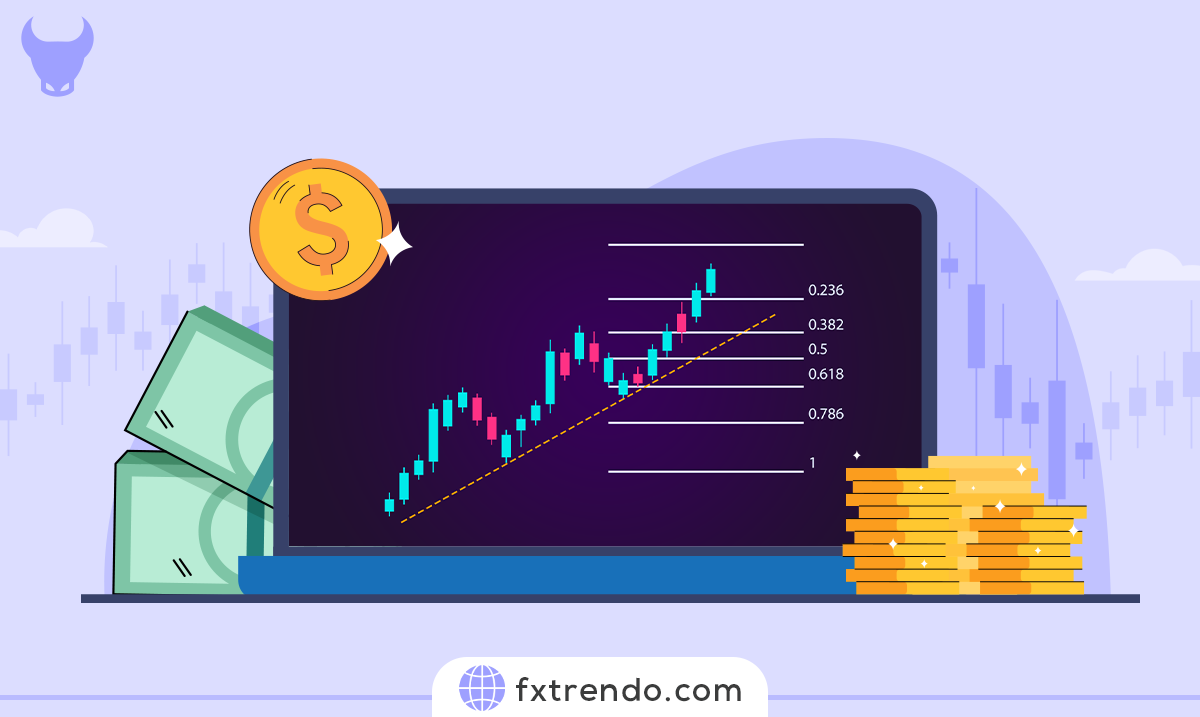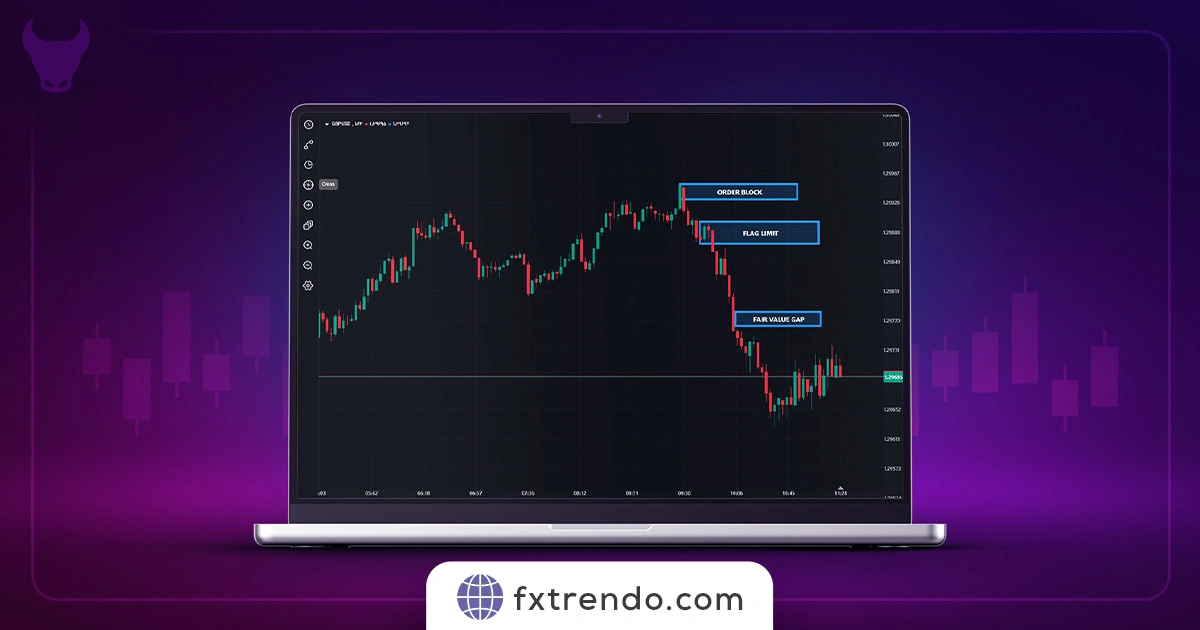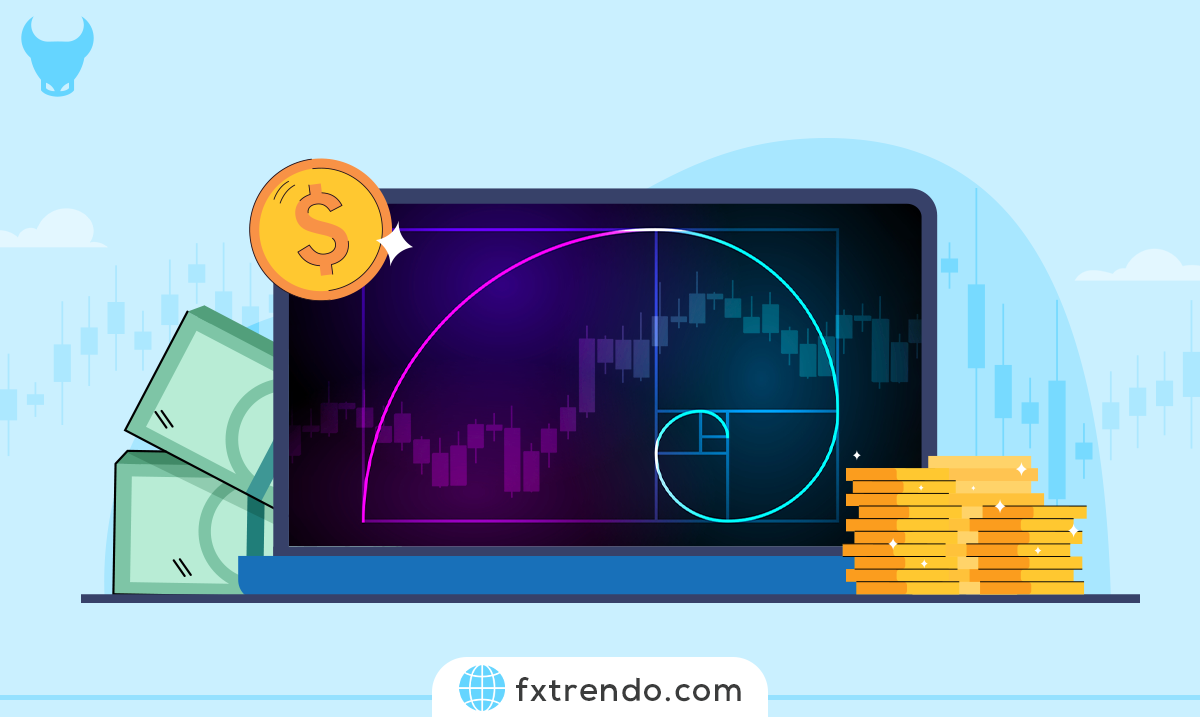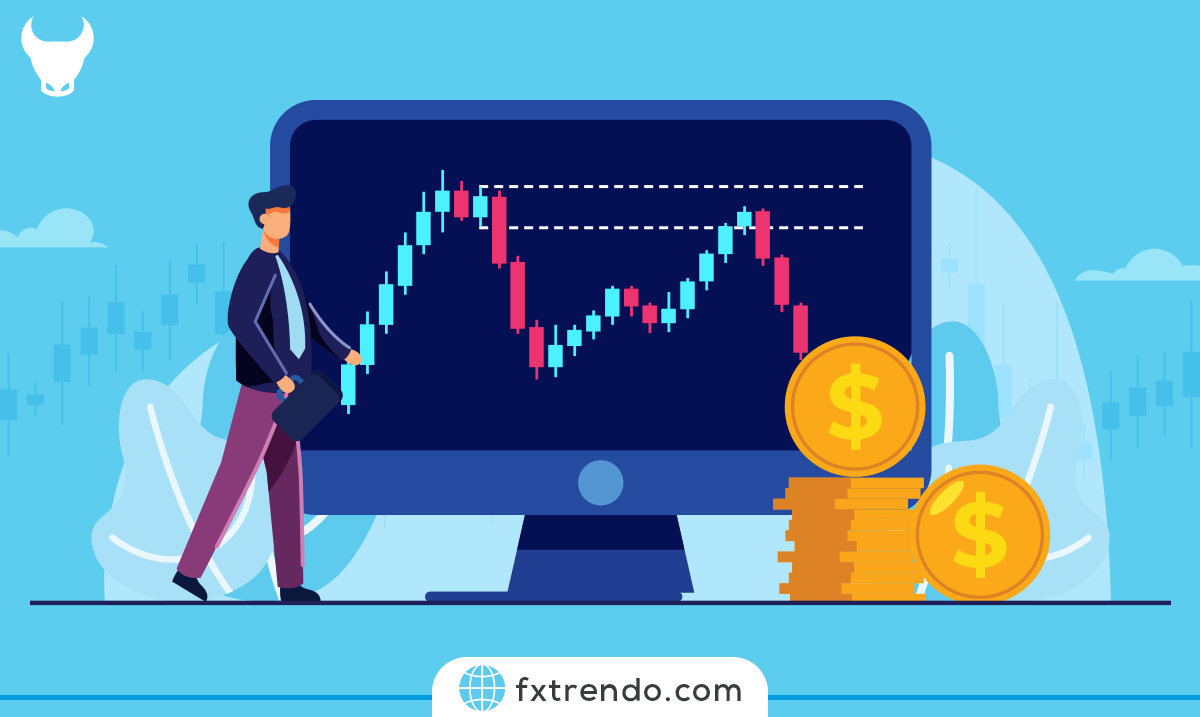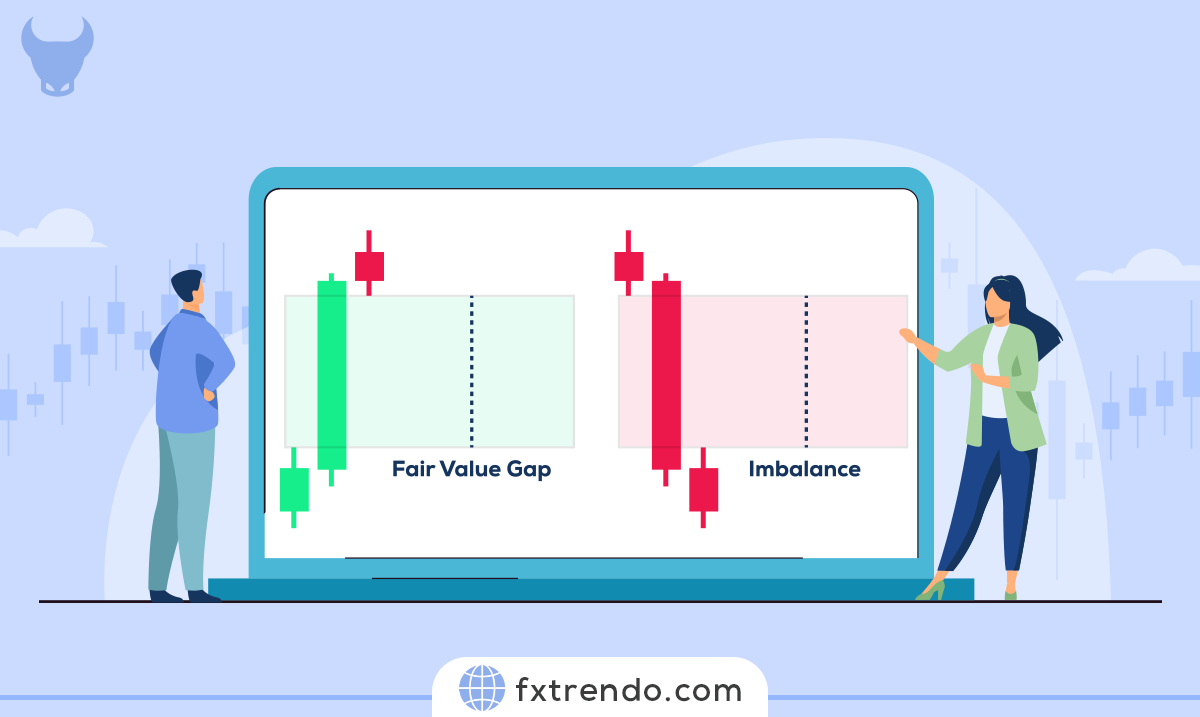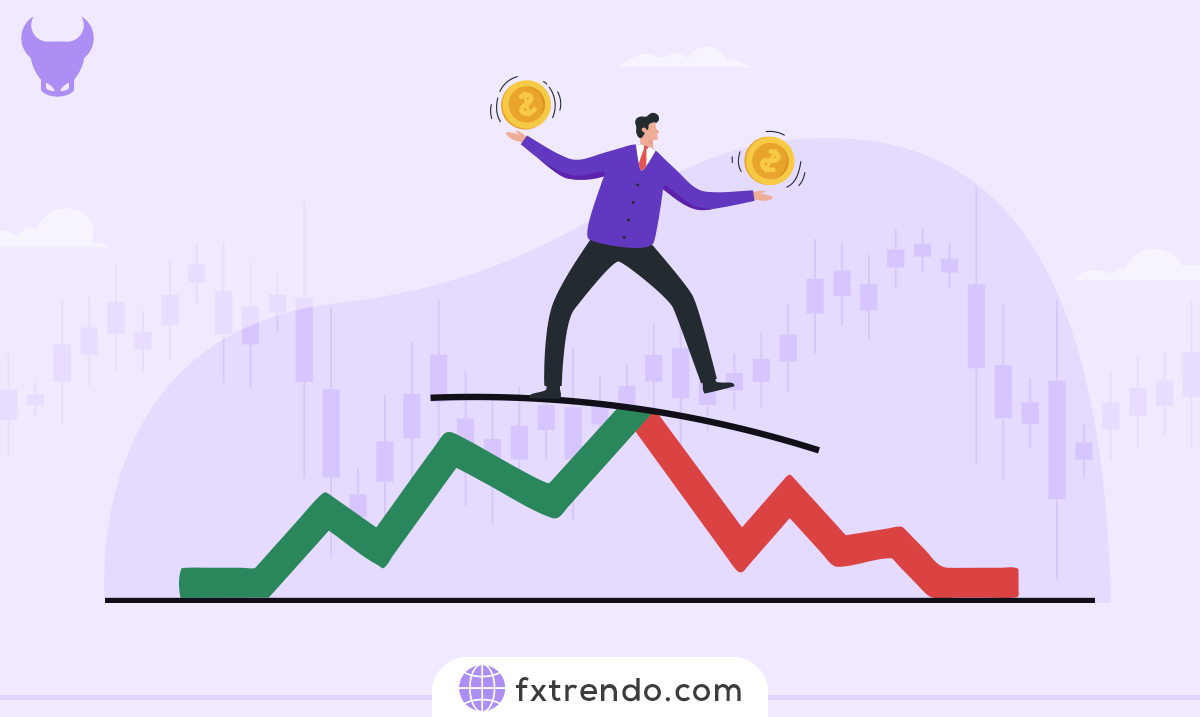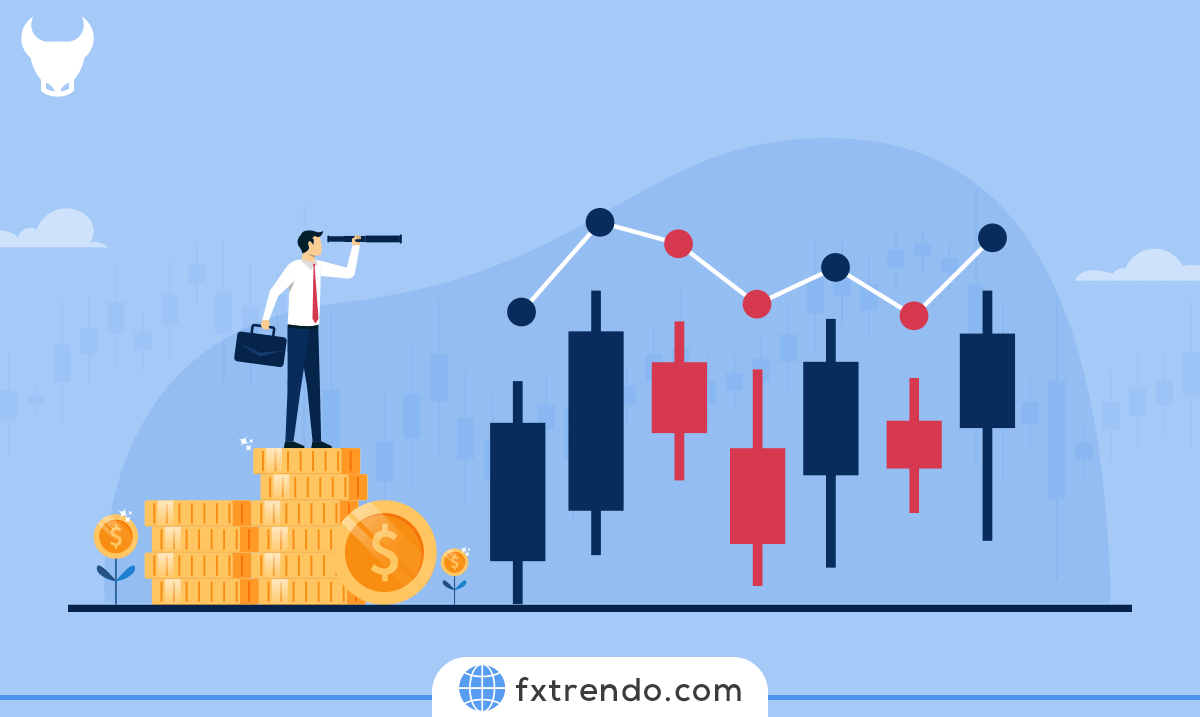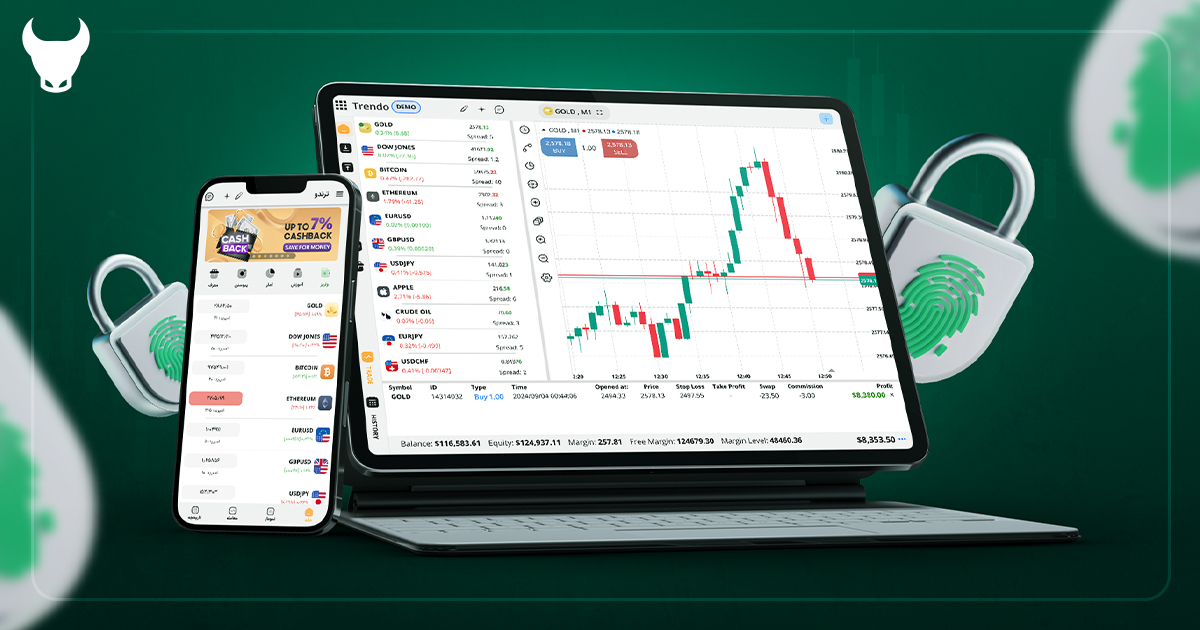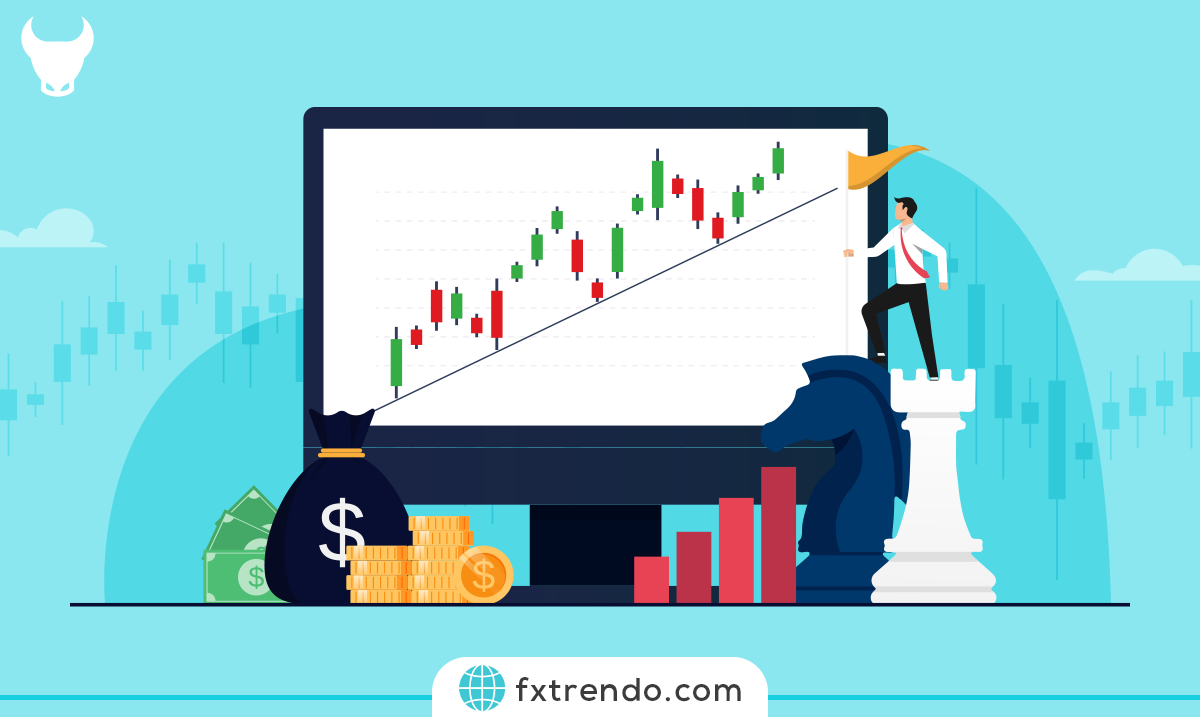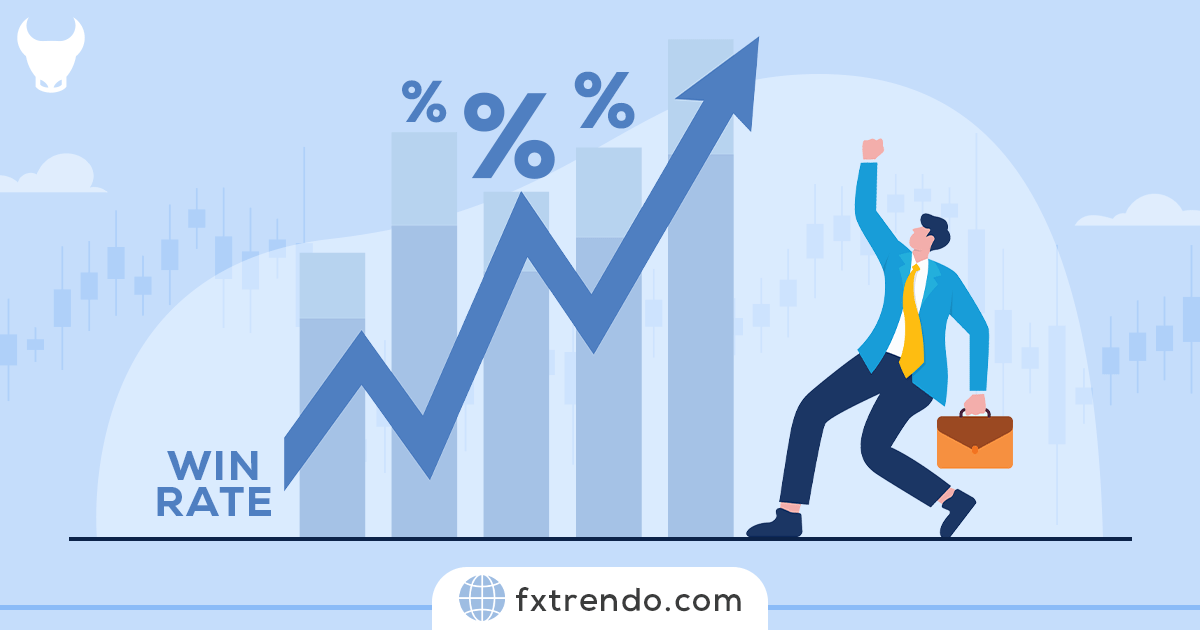What is a Currency Pair? A Comprehensive Guide
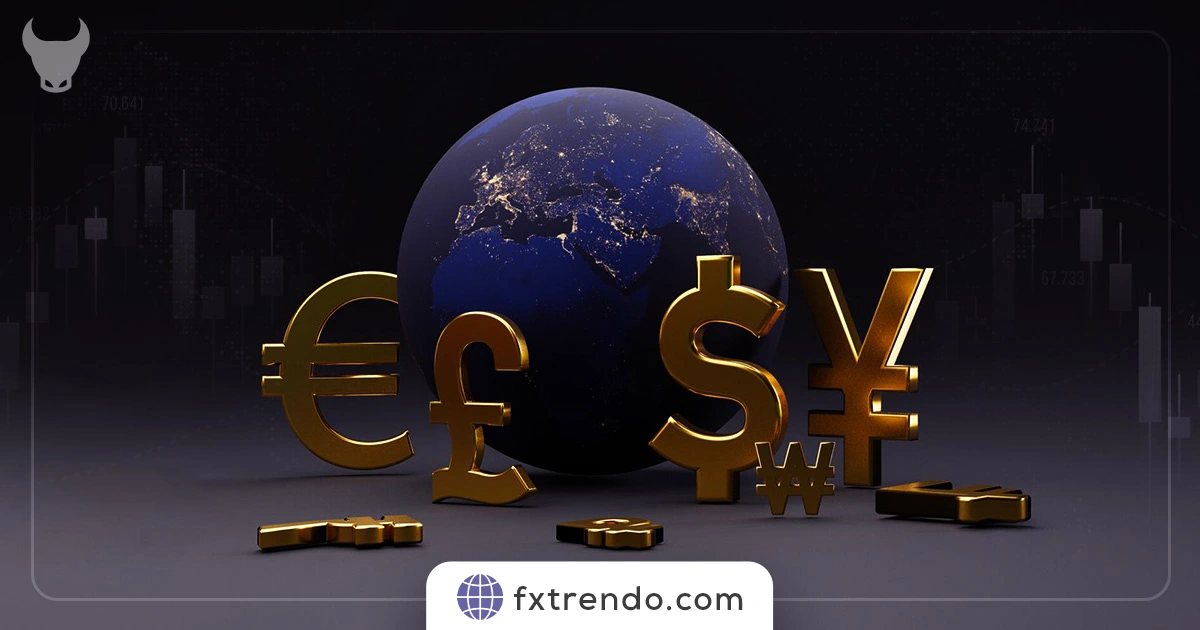

The Foreign Exchange Market, commonly known as Forex, is the largest financial market in the world, known for its exceptionally high liquidity. Forex refers to the exchange of foreign currencies, a process that plays a critical role in facilitating international trade and financial transactions.
Today, millions of individuals from around the world actively participate in the Forex market. Whether you’re a seasoned investor or someone looking for a modern way to grow your wealth, exploring Forex can be a gateway to the exciting world of global trading.
In this article, we’ll delve into the core of Forex trading by examining currency pairs and their various types. Stay with us as we unravel the foundational elements of this dynamic financial market.
Contents
The Forex Market and Currency Pairs
As mentioned earlier, Forex is an international market where you can buy and sell currencies from around the world. Think of it as a vast, decentralized exchange where currencies are traded and converted into one another. For instance, you might sell US dollars (USD) and purchase Swiss francs (CHF) in return.
What sets Forex apart from markets like stocks or commodities is its unique nature of trading. In a stock market, you typically buy shares of a company by paying a set amount of money. You profit when the price of those shares increases, and you sell them at a higher rate.
However, Forex trading operates differently. Transactions in this market are conducted through currency pairs, which represent the relative value of one currency compared to another.
Each currency pair reflects the exchange rate between two currencies. For example:
- In the pair USDCAD, the exchange rate shows how many Canadian dollars (CAD) are needed to buy one US dollar (USD).
- Similarly, in the pair EURUSD, it indicates how much one euro (EUR) is worth in terms of US dollars (USD).
Currency pairs are the foundation of Forex trading, enabling participants to speculate on fluctuations in exchange rates. For instance, if you believe the euro will strengthen against the US dollar, you might buy EURUSD. If your prediction is correct and the euro’s value rises relative to the dollar, you can sell the pair for a profit.
This system of trading pairs makes Forex a dynamic and interconnected market, distinct from other financial markets. It provides traders with endless opportunities to analyze economic trends, global events, and monetary policies, all of which influence currency values.
Features of the Forex Market
The Forex market stands out as one of the most appealing financial markets globally, thanks to its unique characteristics. These features make it a highly flexible and accessible platform for traders of all levels. Below are the key attributes that set the Forex market apart:
1. 24-Hour Accessibility
One of the most attractive aspects of Forex is its round-the-clock availability. The market operates 24 hours a day, five days a week, spanning different time zones worldwide—from Asia and Europe to North America. This means you can trade at any time, whether early morning, late at night, or during your lunch break. With just an internet connection and a device like a laptop or smartphone, you have the freedom to trade from anywhere.
2. Bidirectional Trading
Unlike many traditional markets, Forex allows traders to profit in both rising and falling markets. This is known as bidirectional trading. Whether a currency pair's value is increasing or decreasing, traders can take advantage of these movements.
For example, if you expect a currency’s value to rise, you can buy it, and if you anticipate it will drop, you can sell it short. This flexibility makes Forex a dynamic and exciting market to navigate.
3. Diverse Asset Options
The Forex market is not limited to currency trading alone. Many brokers offer access to a wide range of assets, including:
- Precious metals like gold and silver.
- Commodities such as oil and natural gas.
- Stocks of global companies like Apple and Amazon.
- Stock market indices from various countries.
- Cryptocurrencies, including Bitcoin and Ethereum.
This diversity enables traders to diversify their portfolios and explore opportunities across different sectors, all from a single trading platform.
4. High Liquidity
Liquidity in Forex is unmatched, with trillions of dollars traded daily. This ensures that trades are executed almost instantly, often within fractions of a second, regardless of the size of the transaction. High liquidity also means that traders can enter and exit positions with ease, even during times of market volatility.
Briefly, Forex is more than just a market for exchanging international currencies—it’s a hub for investment across various assets and a gateway to capitalize on global price fluctuations.
The International Organization for Standardization (ISO) and Its Role in Financial Regulations
The International Organization for Standardization (ISO) is a global, non-governmental body based in Geneva, Switzerland, dedicated to developing standards that enhance coordination and efficiency across various industries. One of its key contributions lies in the realm of currencies and financial systems, where its standardized frameworks play a vital role in streamlining global transactions.
Imagine a world where every country identified its currency with unique, inconsistent symbols and names. Such a lack of uniformity would lead to chaos in international trade and financial communications. To address this challenge, ISO established standards that ensure clarity and consistency in currency identification, fostering seamless economic interactions worldwide.
ISO 4217
One of the most notable standards created by ISO in the financial domain is ISO 4217, which introduces a universal three-letter code system for identifying currencies. This standardized approach allows banks, traders, and even everyday users to recognize and exchange currencies without confusion or ambiguity.
In the ISO 4217 system:
- The first two letters of the code represent the country using the currency, based on the ISO 3166 country codes.
- The third letter denotes the specific currency itself.
For example:
- USD stands for the United States Dollar.
- EUR represents the Euro, used across the European Union.
- JPY refers to the Japanese Yen.
These codes are universally recognized and widely used in financial transactions, from banking operations to Forex trading, providing a common language for global commerce.
In the Forex market, eight key currencies dominate trading activity. These currencies, identified through ISO 4217 codes, include:
USD: United States Dollar
EUR: Euro
GBP: British Pound Sterling
CAD: Canadian Dollar
AUD: Australian Dollar
CHF: Swiss Franc
JPY: Japanese Yen
NZD: New Zealand Dollar
These eight currencies form the foundation of Forex trading, combining to create 28 major currency pairs. These pairs represent the bulk of global Forex transactions, serving as the backbone of this highly liquid and interconnected market.
In the Forex market, these standardized currency codes are indispensable tools that allow traders to navigate the complexities of international finance with clarity and precision.
Read more: Everything about the Silver Symbol (XAGUSD) on the Forex Market
Type of Currency Pairs in the Forex Market
As mentioned earlier, trading in the Forex market occurs in pairs of currencies. These currency pairs are divided into two primary categories: major pairs and minor pairs.
Major Currency Pairs
Major currency pairs (also called majors) are pairs where one side always includes the US Dollar (USD). These pairs represent the most significant global economies and are highly favored among traders due to their liquidity, tight spreads, and robust trading volume.
Some of the most traded major pairs include:
- EUR/USD (Euro/US Dollar) – One of the most liquid pairs in the Forex market (The spread on the EURUSD currency pair at Trendo Broker is zero).
- GBP/USD (British Pound/US Dollar) – Known as “Cable,” it is highly traded due to the strength of the UK and US economies.
- USD/JPY (US Dollar/Japanese Yen) – Popular for its stability and low spreads.
- USD/CHF (US Dollar/Swiss Franc) – Often referred to as the “Swissie.”
- AUD/USD (Australian Dollar/US Dollar) – Represents the Australian economy, known for its ties to commodities.
- NZD/USD (New Zealand Dollar/US Dollar) – Reflects the New Zealand economy, particularly agriculture.
- USD/CAD (US Dollar/Canadian Dollar) – Called the “Loonie,” influenced by oil prices as Canada is a major exporter.
These pairs attract the most traders, from beginners to professionals, because they are less volatile compared to other pairs and often have lower transaction costs.
Minor Currency Pairs
Minor currency pairs (also referred to as crosses) exclude the US Dollar (USD), meaning neither of the two currencies in the pair is USD. These pairs are often combinations of other major global currencies, such as the Euro (EUR), British Pound (GBP), Japanese Yen (JPY), and others.
Minor pairs tend to have lower liquidity compared to major pairs, which can result in wider spreads.
Key examples of minor pairs include:
- EUR/GBP (Euro/British Pound) – Reflects economic relationships within Europe.
- GBP/JPY (British Pound/Japanese Yen) – Known for its volatility, suitable for experienced traders.
- AUD/CHF (Australian Dollar/Swiss Franc) – Represents a pairing between a commodity and a safe-haven currency.
- AUD/CAD (Australian Dollar/Canadian Dollar) – Combines two commodity-driven economies.
- EUR/NZD (Euro/New Zealand Dollar) – A less commonly traded pair with unique dynamics.
Trading Volume of Currency Pairs in Forex
In the Forex market, the volume of trading is a key indicator of the market's activity and liquidity. It shows how much of a particular currency pair is being bought and sold during a given period.
Among the many currency pairs in the Forex market, some pairs see much higher volumes than others, largely due to factors like economic importance, trader preference, and the role of certain currencies in global markets.
EUR/USD
The EUR/USD (Euro/US Dollar) currency pair holds the title as the most traded pair in the Forex market. It represents the exchange rate between the Euro, the official currency of the European Union, and the US Dollar, the world's primary reserve currency.
In fact, EUR/USD accounts for about 84% of the total trading volume among major currency pairs. This makes it the dominant currency pair in terms of market activity.
Several factors contribute to its overwhelming popularity:
Economic Power: Both the Eurozone and the United States are among the largest and most influential economies in the world. The strength and stability of these two regions make their currency pair highly attractive for traders.
Liquidity: With such a high volume of trading, the EUR/USD pair benefits from excellent liquidity, which means traders can easily enter and exit positions without facing significant slippage or high transaction costs.
Lower Spreads: Because of its popularity and liquidity, EUR/USD typically has lower spreads compared to other currency pairs, making it an ideal choice for both beginner and professional traders.
Coming in second, the GBP/USD (British Pound/US Dollar) pair accounts for about 13% of the total Forex trading volume. This pair is widely followed because the British Pound (GBP) is one of the oldest and most traded currencies globally.
Factors that drive the trading activity in GBP/USD include:
Global Influence: The United Kingdom has a strong financial sector, with London being a major global financial hub. This makes GBP/USD a favorite for many traders who want exposure to the British economy.
Volatility: Compared to EUR/USD, GBP/USD tends to experience more volatility, which can present more trading opportunities for those looking for higher-risk, higher-reward scenarios.
While not as liquid as EUR/USD, GBP/USD still benefits from significant trading activity, with many traders actively watching it during key economic announcements and geopolitical events, such as Brexit negotiations or changes in UK monetary policy.
USD/JPY
The USD/JPY (US Dollar/Japanese Yen) pair accounts for about 12% of the total trading volume. The Japanese Yen (JPY) is one of the most widely traded currencies, and its pair with the US Dollar is a staple for Forex traders.
Key factors that make USD/JPY a popular choice include:
Safe-Haven Status: The Japanese Yen is often considered a "safe haven" currency, meaning that investors tend to buy it during times of global economic uncertainty or market turbulence. This makes the USD/JPY pair particularly active in times of financial stress.
Interest Rate Differentials: The difference in interest rates between the US Federal Reserve and the Bank of Japan often creates profitable opportunities for traders who are looking to take advantage of carry trades, where they borrow in a low-interest currency (JPY) and invest in a higher-interest currency (USD).
Read more: The best time to trade forex currency pairs
What Are Base Currency and Quote Currency in Forex?
In the Forex market, every currency pair consists of two components: a base currency and a quote currency (also called the counter currency).
Base Currency (The First Currency in the Pair)
The base currency is the first currency listed in a currency pair. It represents the amount of currency being exchanged and is always equal to one unit. In simple terms, it’s the "reference" currency in the pair, and its value is compared to the second currency, which is the quote currency.
For example, in the currency pair GBP/USD (British Pound/US Dollar), the GBP (British Pound) is the base currency. When you see the pair quoted, you're looking at how much of the quote currency (USD) is needed to buy one unit of the base currency (GBP).
Quote Currency (The Second Currency in the Pair)
The quote currency (also called the counter currency) is the second currency listed in a currency pair. It shows how much of this currency is required to purchase one unit of the base currency. The value of the quote currency fluctuates depending on the market's perception of the base currency and the economic factors influencing both currencies.
In the GBP/USD example, the USD is the quote currency. If the pair is quoted as 1.45229, this means that 1 British Pound is worth 1.45229 US Dollars. The quote currency is what you’re buying or selling when you trade.
Read more: Profit Calculator
What Else Can You Trade in Forex Besides Currency Pairs?
While the core focus of the Forex market is on currency pairs, Forex brokers offer a broader range of trading instruments through Contracts for Difference (CFDs).
CFDs allow traders to speculate on the price movements of various assets without actually owning the underlying asset. This flexibility opens up numerous opportunities for diversification in a trader's portfolio.
Here’s a comprehensive look at what else you can trade in the Forex market besides the traditional currency pairs:
1. Precious Metals
Precious metals, especially gold (XAU/USD) and silver (XAG/USD), are among the most popular commodities traded in the Forex market. These metals are often viewed as safe-haven assets, particularly in times of economic uncertainty or market volatility. Traders use gold and silver to hedge against inflation or geopolitical risks.
Gold (XAU/USD): Gold is considered one of the oldest forms of currency and is widely seen as a store of value. The price of gold often moves inversely to the value of the US Dollar, making it a popular choice for Forex traders.
Silver (XAG/USD): Silver shares many of the same qualities as gold but is typically more volatile, offering higher risk and potential reward.
Other Precious Metals: Palladium, Platinum, and other precious metals are also traded on many Forex platforms. These commodities can be a good choice for those looking to diversify beyond traditional currency pairs.
2. Energy Resources
Energy markets, especially oil and gas, are key components of global trade and the economy. In the Forex market, traders can speculate on the price movements of these commodities via CFDs.
Crude Oil (WTI and Brent): The two primary types of crude oil traded in the market are WTI (West Texas Intermediate) and Brent Crude. Oil prices can be influenced by geopolitical events, supply and demand dynamics, and economic data from major oil-producing countries.
Natural Gas: Another popular energy resource traded in the Forex market. Natural gas prices are affected by weather conditions, seasonal demand, and shifts in energy production.
Energy markets can be volatile, but they provide a wide range of trading opportunities for those who understand the global factors affecting supply and demand.
3. Stocks of Major Companies
While Forex trading is predominantly focused on currencies, many brokers allow traders to speculate on the stocks of major companies around the world through CFDs. This means you can trade on the performance of stocks like Apple, Google, Amazon, and more without owning the actual shares.
4. Stock Indices
A stock index represents a group of stocks that collectively serve as a benchmark for a specific market or sector. Popular indices like the Dow Jones or S&P 500 reflect the performance of the broader stock market, allowing traders to gain exposure to the overall performance of major economies like the US.
Dow Jones Industrial Average (DJIA): One of the oldest and most famous stock indices, it tracks 30 major US companies. The DJIA provides a broad overview of the US economy's health and is often used by traders to gauge market sentiment.
S&P 500: The S&P 500 is another key index in the US market, comprising 500 of the largest publicly traded companies. It serves as a benchmark for the overall performance of the US stock market.
NASDAQ: The NASDAQ index is heavily weighted towards technology companies and is a popular choice for traders looking to speculate on the tech sector's performance.
Traders can use CFDs to gain exposure to these indices and speculate on their price movements based on economic reports, corporate earnings, and broader market trends.
5. Cryptocurrencies
In recent years, cryptocurrencies have gained significant popularity in the Forex market. These digital assets, such as Bitcoin (BTC), Ethereum (ETH), and Litecoin (LTC), are traded via CFDs on many Forex platforms.
Cryptocurrency trading can be highly speculative, but it offers traders the potential for significant gains, particularly during periods of intense price fluctuations.
If you're looking to expand your trading horizons, platforms like Trendo Broker provide access to these instruments, allowing you to trade in a professional and ideal trading environment with low spreads and commissions.
Currency Pairs and Trading Symbols Available at Trendo Broker
At Trendo Broker, traders have access to a wide range of trading instruments with some of the lowest spreads and commissions in the industry. Whether you're interested in Forex currency pairs, cryptocurrencies, precious metals, energy markets, stock indices, or equities, Trendo Broker provides an ideal trading environment to help you take advantage of diverse financial opportunities.


1. All Forex Currency Pairs (Major and Minor)
One of the main advantages of trading with Trendo Broker is the ability to access both major and minor currency pairs from the Forex market. These currency pairs include well-known combinations like EUR/USD, GBP/USD, and USD/JPY, as well as a variety of other pairs from different parts of the world.
Major Currency Pairs: These involve the US Dollar paired with other major currencies. For example, EUR/USD, GBP/USD, and USD/JPY.
Minor Currency Pairs: These pairs do not involve the US Dollar but represent other world currencies. Examples include EUR/GBP, GBP/JPY, and AUD/CHF.
2. Popular Cryptocurrencies: Bitcoin, Ethereum, and More
The rise of cryptocurrencies has brought a new wave of traders into the financial markets, and Trendo Broker ensures that you have access to the most widely traded digital assets. Whether you're looking to speculate on Bitcoin (BTC), Ethereum (ETH), Ripple (XRP), or other popular digital currencies, you can trade these assets with ease.
Bitcoin (BTC): Bitcoin is the world's first cryptocurrency and remains the most widely traded digital currency in the market.
Ethereum (ETH): Ethereum is the second-largest cryptocurrency by market cap and offers more than just a digital currency; it enables decentralized applications and smart contracts.
Ripple (XRP): Known for its focus on cross-border payments and banking solutions, XRP is a key cryptocurrency for those interested in the future of global finance.
3. Precious Metals: Gold, Silver, and Other Commodities
For traders interested in commodities, precious metals offer a great way to diversify beyond traditional currencies. At Trendo Broker, you can trade popular metals such as gold (GOLD), silver (SILVER), palladium (PALLADIUM), and platinum (PLATINUM). Precious metals are often used as safe-haven assets, especially in times of economic uncertainty, making them highly attractive to traders.
Gold (GOLD): Gold is a widely recognized store of value, particularly during times of economic turmoil or inflation.
Silver (SILVER): Silver shares similar characteristics to gold, though it tends to be more volatile.
Palladium (PALLADIUM) and Platinum (PLATINUM): These metals, often used in industrial processes, also offer excellent trading opportunities.
Precious metals are commonly traded against the US Dollar but are also available in various pairs.
4. Energy Markets: Oil and Natural Gas
The energy market is another major area of interest for traders, and at Trendo Broker, you can trade key energy commodities such as crude oil, Brent oil, and natural gas. These commodities are crucial to global economies, and their prices are influenced by a variety of factors, including geopolitical events, supply-demand dynamics, and market sentiment.
Crude Oil (CRUDE OIL): Crude oil is the most traded energy commodity, with two main types being West Texas Intermediate (WTI) and Brent Crude.
Brent Oil (BRENT OIL): Brent oil is considered the global benchmark for crude oil prices, and it is often more expensive than WTI due to its higher quality and production location.
Natural Gas (NATURAL GAS): Natural gas is a highly traded commodity, with its price being influenced by seasonal demand, weather conditions, and geopolitical factors.
5. Stock Indices: Dow Jones, S&P 500, DAX, and More
For traders interested in gaining exposure to the overall performance of stock markets, Trendo Broker offers access to major stock indices. These indices reflect the performance of a group of stocks, providing a snapshot of market trends. Some of the most popular indices available for trading include:
Dow Jones Industrial Average (DOW JONES): Comprising 30 of the largest and most influential companies in the US, the Dow Jones index is one of the most closely watched benchmarks.
S&P 500: This index tracks the performance of 500 of the largest publicly traded companies in the US and is widely considered one of the best indicators of the US stock market.
DAX 40: The DAX index represents the 40 largest companies listed on the Frankfurt Stock Exchange in Germany.
These indices can be traded as CFDs, allowing you to speculate on their price movements without actually owning the underlying stocks.
6. Stocks: Trade Major Companies Like Amazon, Apple, and Disney
For those who want to trade individual stocks from major companies, Trendo Broker provides access to a wide range of stocks from US and European companies. You can trade shares of major corporations like Amazon (AMZN), Apple (AAPL), and Walt Disney (DIS), among others. These stocks are highly liquid and influenced by company performance, economic conditions, and broader market trends.
Amazon (AMZN): As one of the largest e-commerce companies in the world, Amazon’s stock is widely followed by traders and investors alike.
Apple (AAPL): Apple is one of the most valuable companies globally, and its stock is a favorite for traders interested in technology.
Walt Disney (DIS): Disney’s diverse range of businesses, from theme parks to entertainment, makes its stock a popular choice.
Trading stocks through CFDs offers flexibility, as you can profit from both rising and falling stock prices.
Trendo Broker provides an extensive range of trading instruments that cover various asset classes, including Forex currency pairs, cryptocurrencies, precious metals, energy resources, stock indices, and individual stocks.
By registering with Trendo, you can access these markets in an ideal trading environment, equipped with low spreads, low commissions, and a professional trading platform.
Conclusion
In conclusion, understanding currency pairs and how trading works in the Forex market is the first step towards entering this fascinating and complex financial world. However, this market isn't just limited to currency pairs; it offers a wide range of investment opportunities, from gold and oil to cryptocurrencies and stocks of major global companies.
If you are looking to expand your knowledge and enter this market, mastering the fundamentals and getting familiar with different types of currency pairs can serve as a solid foundation for your success.
Keep in mind that alongside mastering trading concepts and tools, risk management and controlling emotions are key elements to thriving in this volatile market.
Frequently Asked Questions (FAQs)
1. What is a currency pair and what role does it play in the Forex market?
2. What are the different types of currency pairs in Forex?
3. Which currency pairs are more suitable for beginner traders?
4. How is the value of a currency pair determined?
5. Which currency pairs have the highest trading volume in Forex?
6. What factors cause fluctuations in currency pairs?
پست مرتبط
پربازدیدترین ها
0










